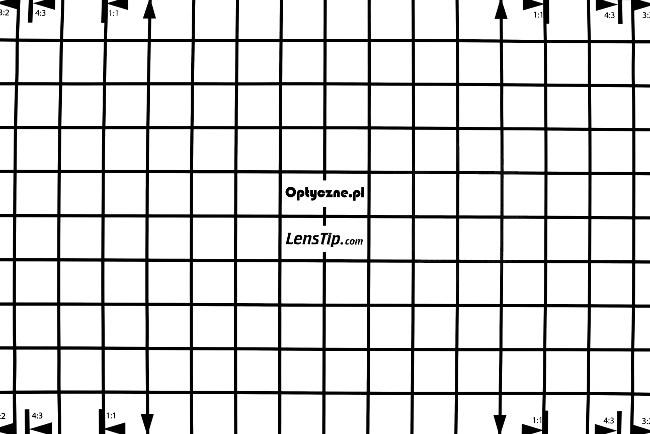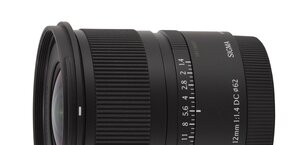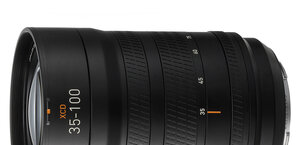Sony E 15 mm f/1.4 G
6. Distortion and field of view
Distortion
If a lens, attached to a body, forces distortion correction, and deactivates the distortion control function in the menu you should know something might be up. It might, for example, indicate a practice that has been very popular lately of letting software of a camera to correct geometric deformations instead of the lens's optics. Such a tactics might be justified to a point because distortion is easy to correct; still you have to remember that there is a price to be paid. After such an automatic correction images are cropped and rescaled and such operations influence their quality. What's more, the higher distortion level you deal with the more scaling and cropping you will need. That's why giving up distortion correction completely is usually not such a great idea – the optics of a lens should correct it at least partially.Sony optics specialists have given up completely any correct distortion effort. As a result RAW files show huge barrel variant of that aberration which level we measured as -8.58%.
The software of the camera is able to reduce the aberration to a practically imperceptible level . Our measurements on JPEG files showed a value of -0.35%, something you certainly won't notice in real life photos.
Please Support UsIf you enjoy our reviews and articles, and you want us to continue our work please, support our website by donating through PayPal. The funds are going to be used for paying our editorial team, renting servers, and equipping our testing studio; only that way we will be able to continue providing you interesting content for free. |
- - - - - - - - - - - - - - - - - - - - - - - - - - - - - - - - - - - - - - - - - - - - - - - -
| Sony A7R III, APS-C, 15 mm, JPEG | |||

|
|||
| Sony A7R III, APS-C, 15 mm, RAW | |||

|
|||
Field of view
As we had photos of starry sky at our disposal we decided to measure the real field of view of the tested lens for both, distortion-corrected JPEG files and neutral RAW files. It allowed us to check whether the field of view, stated by the producer is the field before or after correction of deformations.In order to do that we transformed the pixel layout (X,Y) from the photo into the equatorial coordinate system (right ascension and declination), which locates a star on a celestial sphere. That way we could determine the field of view of the lens with utter precision and in the right way, so for rays of light coming from infinity.
In the case of JPEG files the field amounts to 88.0 degrees with the relative mesh-fitting error not exceeding 0.3 of a degree. A 15 mm rectilinear lens should provide a field of view of 86.8 degrees on the APS-C sensor so the Sony lens field provides even some reserve. Anyway, now we are sure nobody is trying to cheat you and everything is in perfect order.
There is also a bonus – if you use neutral RAW files you can enjoy a lens with an even wider field of view. That field, measured on RAW files, amounted to as much as 94.4 degrees with a measuring error on a level of 0.3 of a degree. It's almost as big a field as the field of a 13 mm rectilinear lens and exactly the same as a field of a 20 mm lens designed for full frame and corrected in a perfect way.






